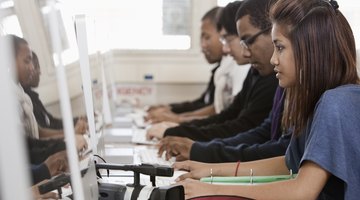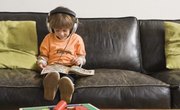Thankfully, the days of sitting in a stuffy classroom listening to a stuffy teacher talk about material from a stuffy textbook are becoming yesterday's news. The widespread availability of media, especially in relation to technology, is changing the ways educators teach as well as how students learn. Media in the classroom engage students in learning and provide a richer experience. Interactive media, such as SMART Boards, allow students to move items around on a screen for illustrative purposes, a definite plus for those who are considered visual learners. Many forms of media are current and updated multiple times throughout the day. This access to real-time information allows teachers to lead discussions and assign projects about current events, which is significantly less tedious than having students find and bring current newspapers to class. Recent reports indicate the majority of students view media as exciting learning aids, making learning entertaining and less monotonous.
Appeal to Multiple Learning Styles
Media appeal to visual, auditory and kinesthetic learners. Students can watch a movie, listen to music or interact with digital media using top-notch teaching resources, such as individual touchscreen tablets and SMART Boards which are essentially interactive chalkboards. The most effective teachers don't depend on one single teaching style but instead use a variety of methods to reach the greatest number of students. Providing a rich learning experience through classroom media keeps students focused and actively engaged in learning.
Creates an Authentic Learning Experience
Using newspapers, brochures, job application forms and news broadcasts provides authentic opportunities for students to learn using real-world media. These mediums often simulate future educational and career experiences in which students must read, evaluate and interpret information based on items that they need in their daily lives. When students use objects from the real world, they can see the connection between what they learn in school and how they can use the knowledge as a member of society.
Strengthens Critical-Thinking Skills
Educators can use media to hone critical-thinking skills in that students can write a song, analyze a movie or evaluate a news broadcast. Instructors can use the media to ask probing questions and facilitate discussions that extend beyond basic comprehension questions as well as asking students to create projects while actively engaged with classroom tools. These hands-on activities challenge students to use their creativity skills to make connections between ideas and concepts.
Teaches Students to Use Media
Using media in the classroom makes students aware of the ever-changing world of electronic communications; giving them a better understanding of such resources now will prepare them to be successful in the future. Students not only learn how to use the Internet to access educational videos or locate digital periodicals for information, but they also learn the value of respecting and protecting pricey media tools. In addition, they can learn how to determine the value of media and become familiar with methods to produce their own media.
Related Articles
References
Writer Bio
Renee Williams began writing professionally in 1989. She is a certified English teacher and has a Bachelor of Arts in journalism.











